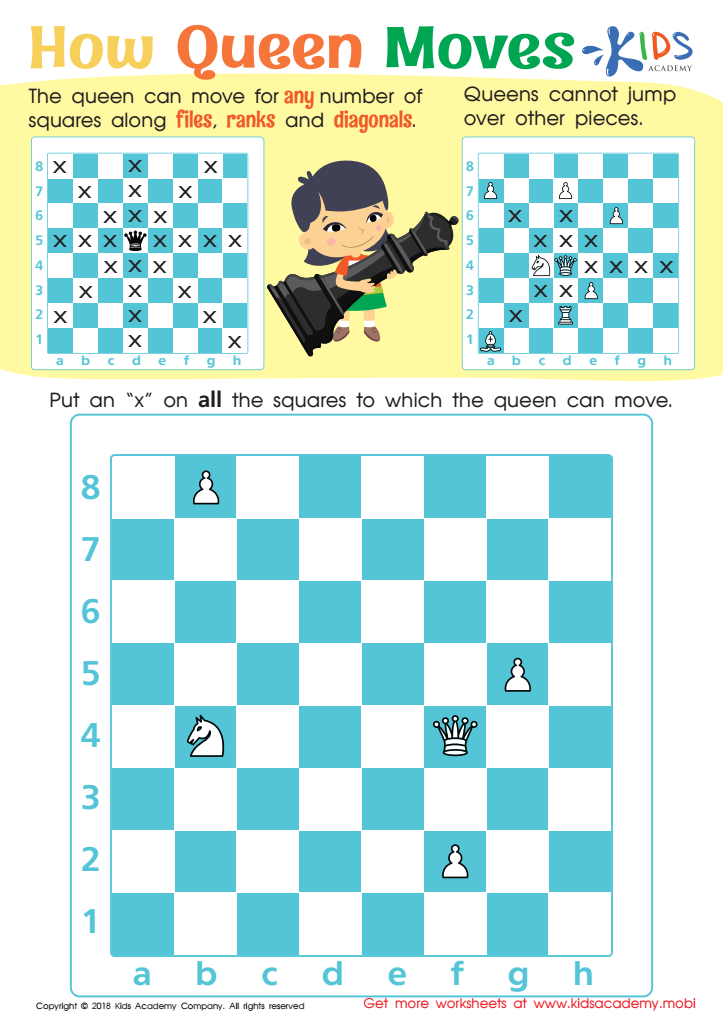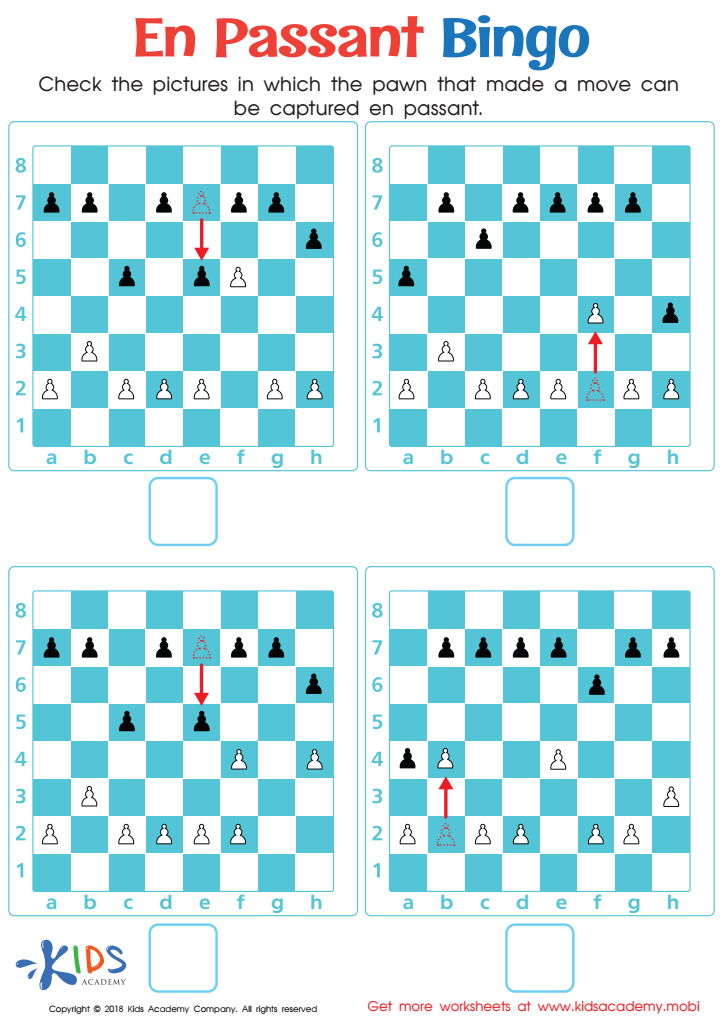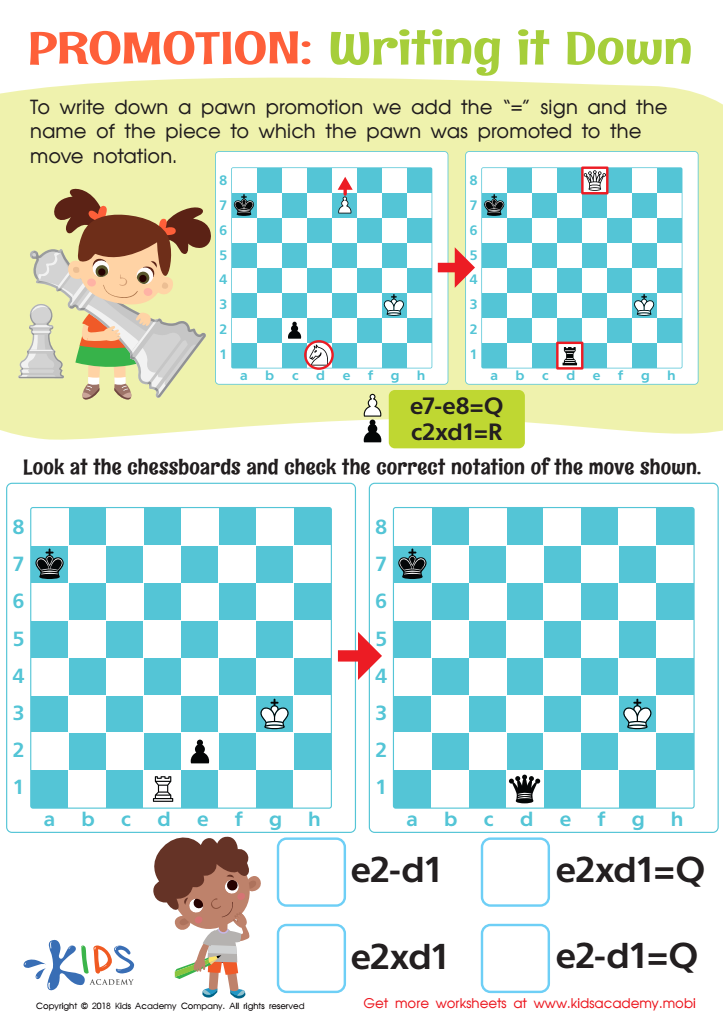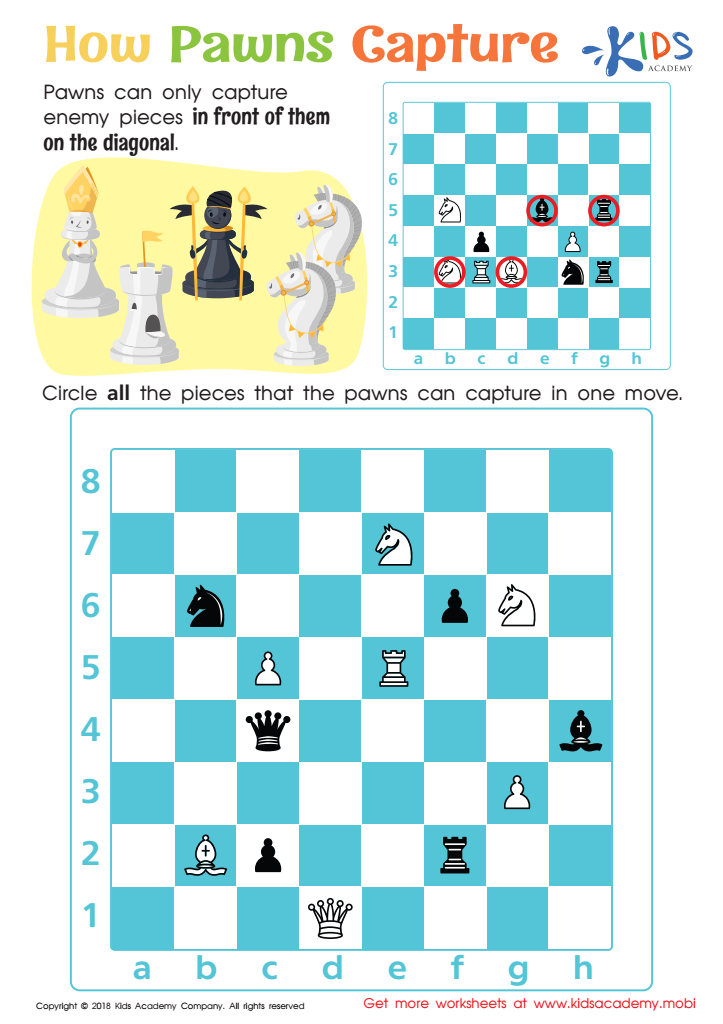Normal Chess Worksheets for Ages 4-6 - Page 2
54 filtered results
-
From - To


How Bishops Capture Worksheet


Position of the Chessboard: White on the Right Worksheet


Pawns Bingo Worksheet


How Queen Moves Worksheet


Queen Quest Worksheet


Two Rook Bingo Worksheet


How Knight Captures Worksheet


How Pawns Move: Part II Worksheet


What's My Name? Worksheet


Ranks and Files Worksheet


Find Diagonals Worksheet


Chess Pieces Math Worksheet


How King Captures Worksheet


Bishop Quest Worksheet


En Passant Bingo Worksheet


Knight and Pawn Worksheet


Rooks Bingo Worksheet


Chess Manners Worksheet


Notation Quest Worksheet


Moves Notation Bingo Worksheet


Writing it Down Worksheet


How Pawns Capture Worksheet


Notation of Captures Writing it Down Worksheet


How Pawns Move: Part I Worksheet
Normal Chess for Ages 4-6 is a vital activity for young children as it fosters essential cognitive and social skills. First and foremost, chess enhances critical thinking and problem-solving abilities. As children learn to think several moves ahead, they develop planning skills and the foresight to anticipate outcomes—valuable skills for all areas of learning.
Chess also supports emotional development. It teaches patience and discipline, as children must learn to wait for their turn and respond appropriately to setbacks. This encourages resilience and adaptability, helping children understand the importance of persistence in the face of challenges.
Furthermore, chess introduces fundamental concepts of strategy and logic in a fun and engaging way. It ignites creativity, as children explore different tactics and formations, making the game both an educational and enjoyable experience.
From a social perspective, chess promotes interaction and communication among peers. Playing in pairs or small groups encourages teamwork and respect for others, fostering a sense of community. Parents and teachers should embrace Normal Chess to cultivate happiness and growth, enriching the lives of children during a critical period of development. Antiquating chess in early education makes an impactful step toward nurturing well-rounded, thoughtful, and strategic thinkers for the future.
 Assign to My Students
Assign to My Students















